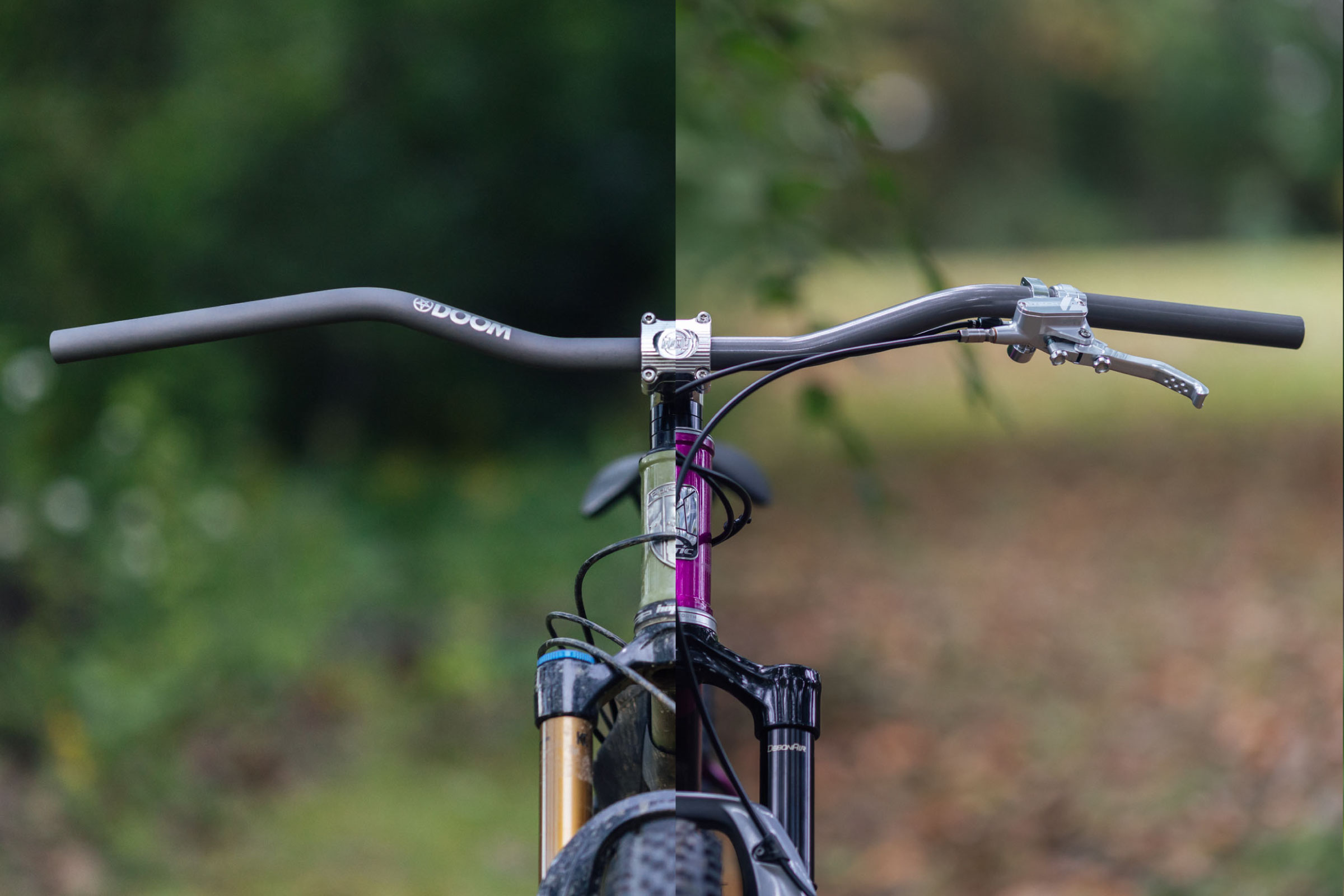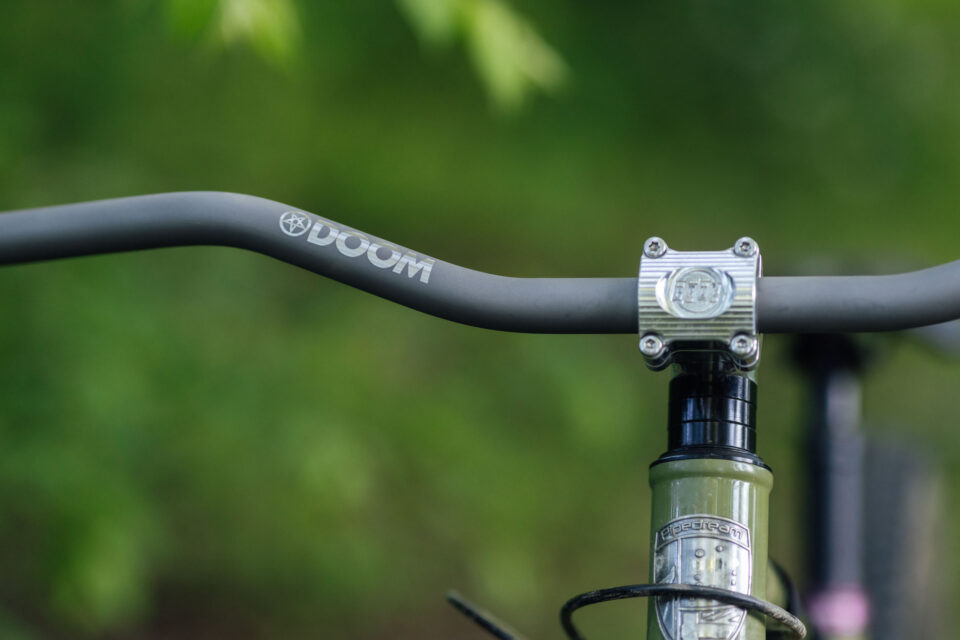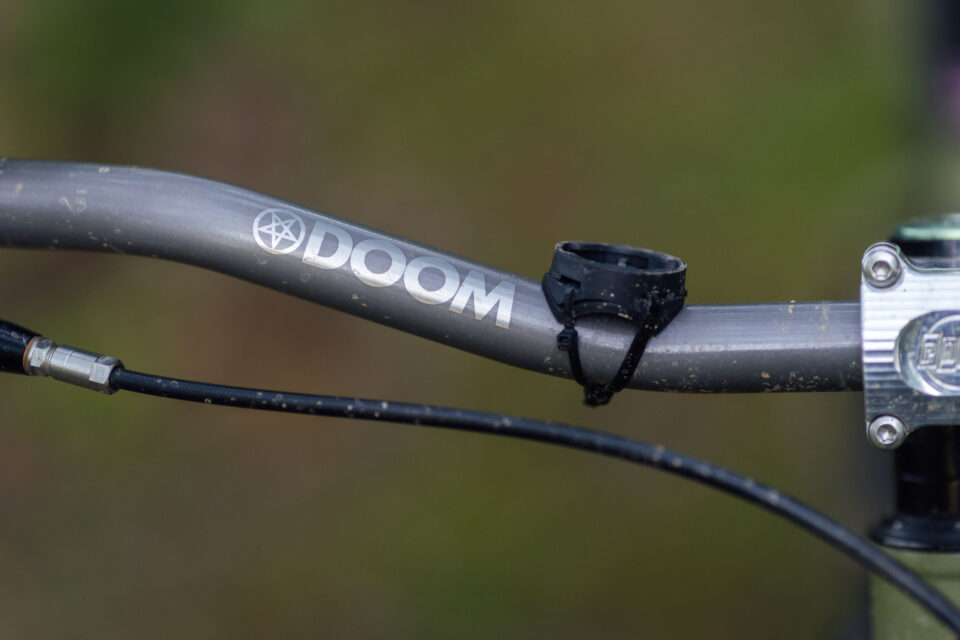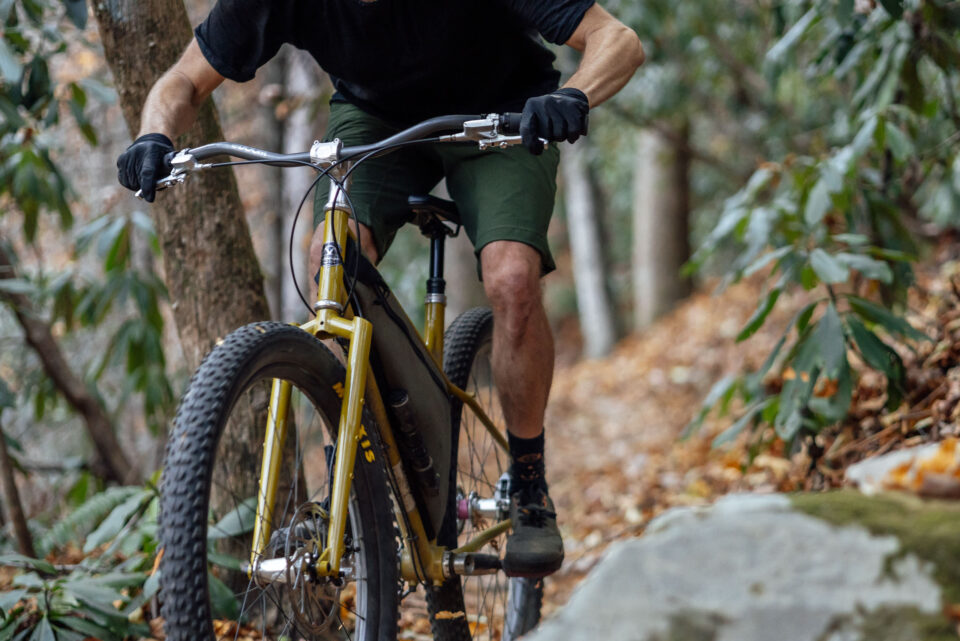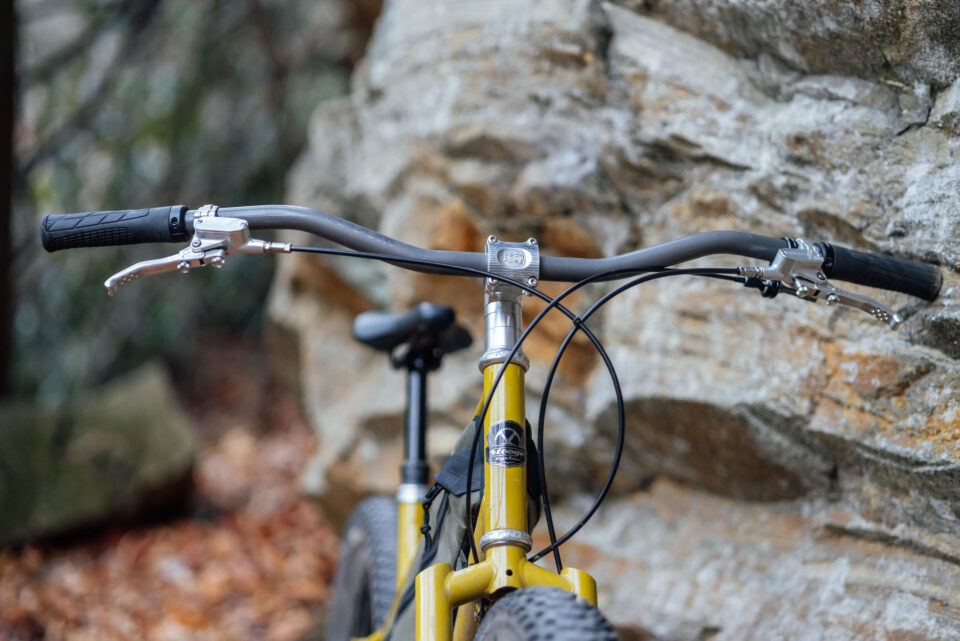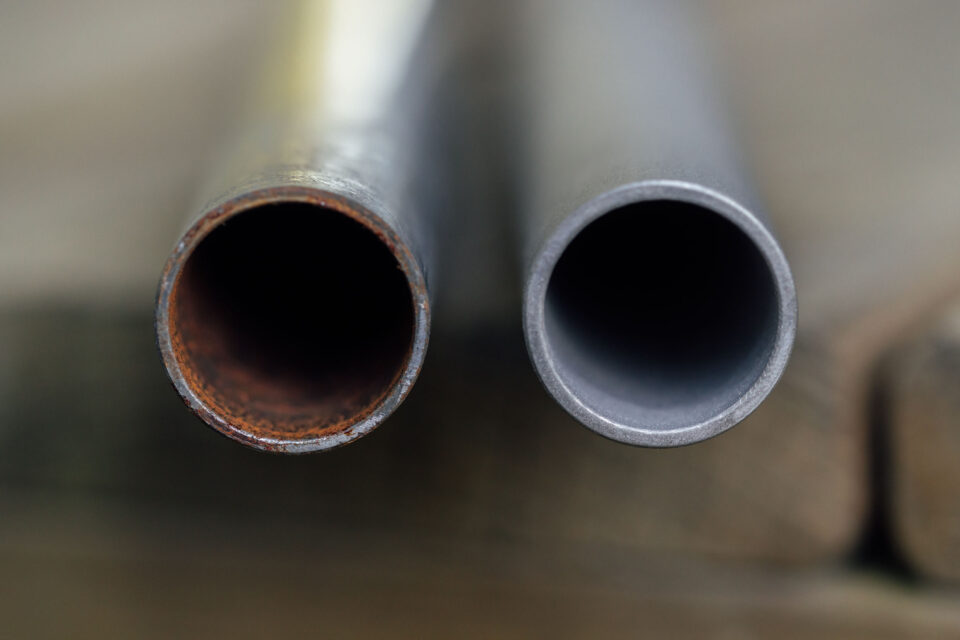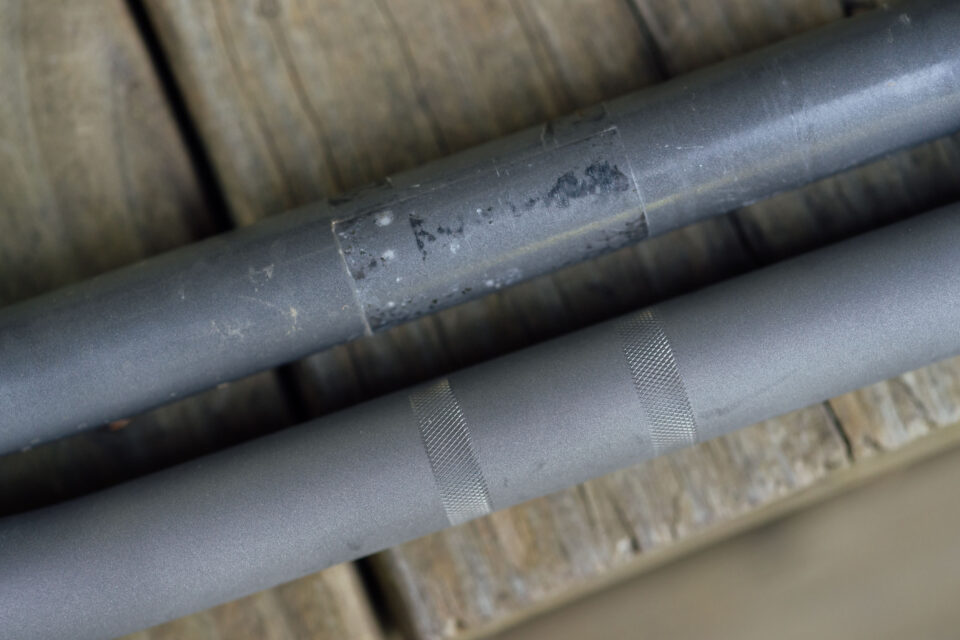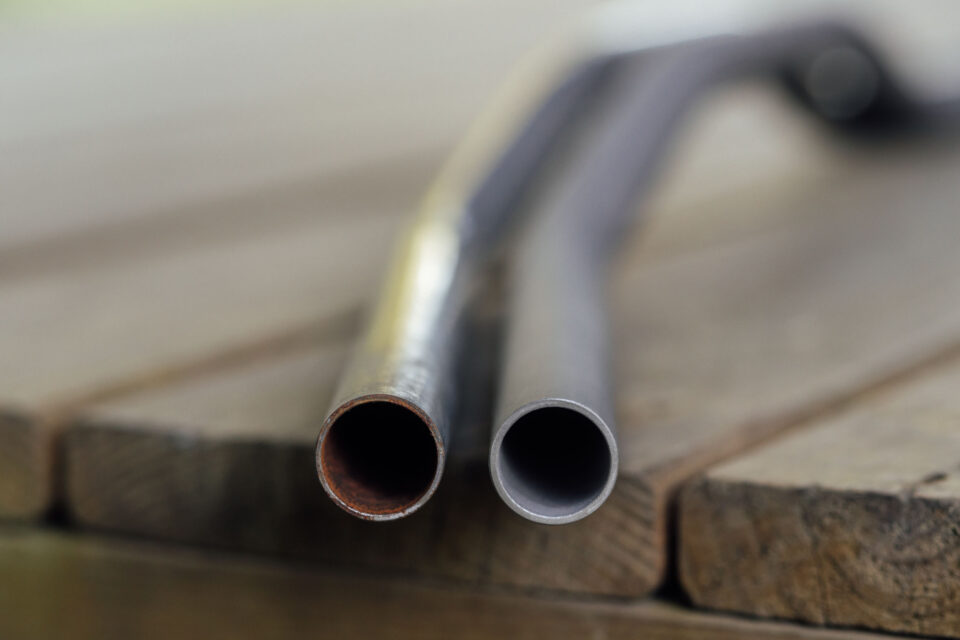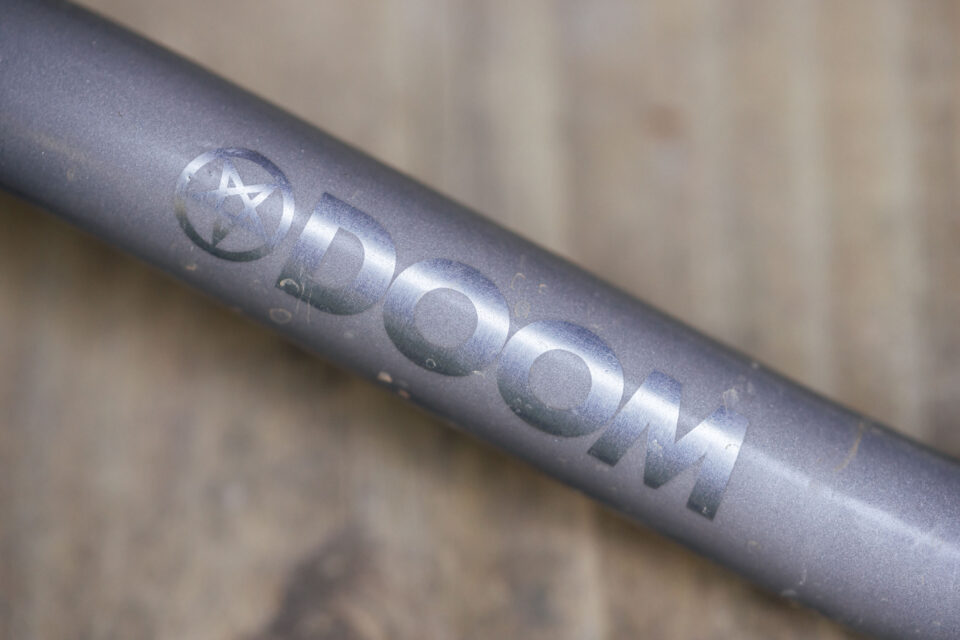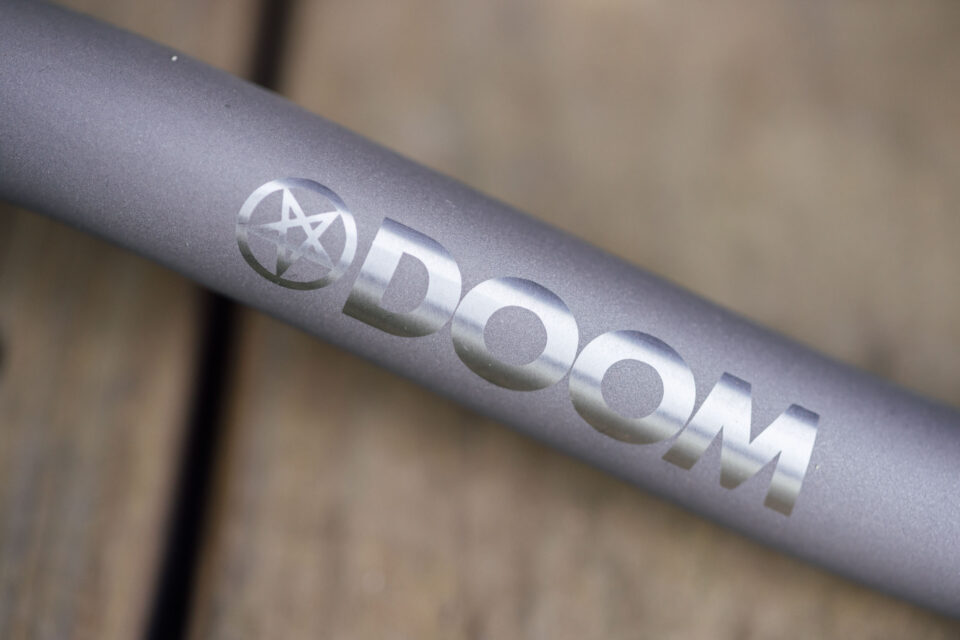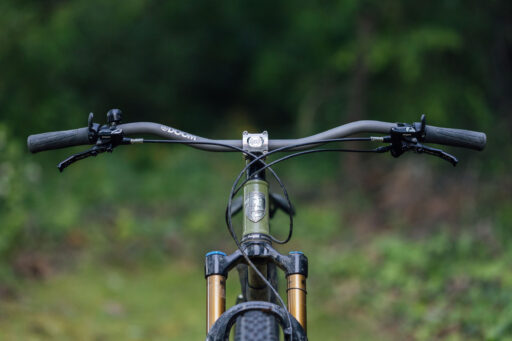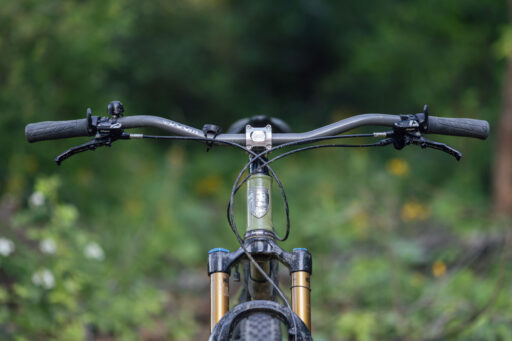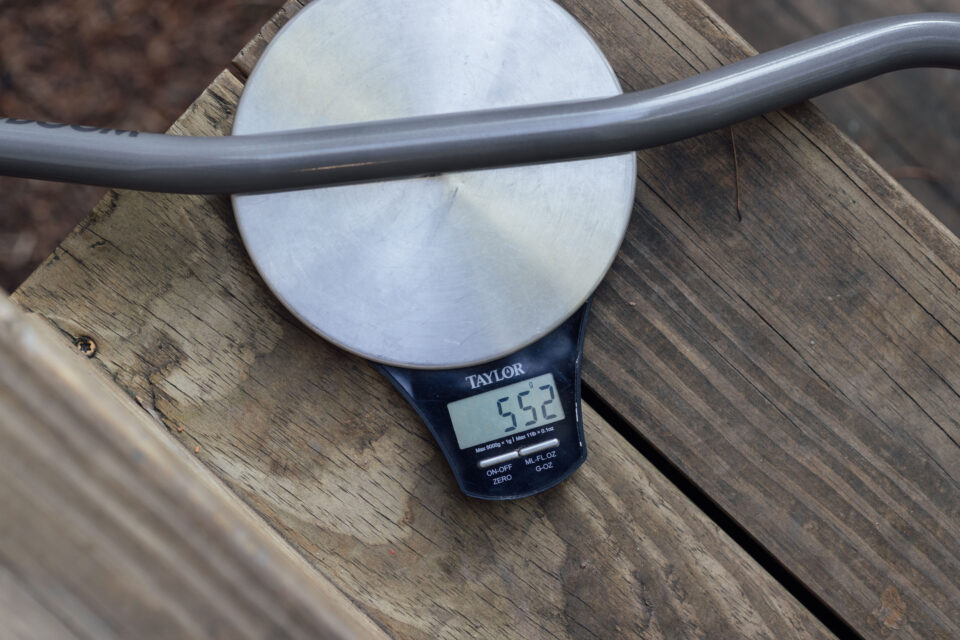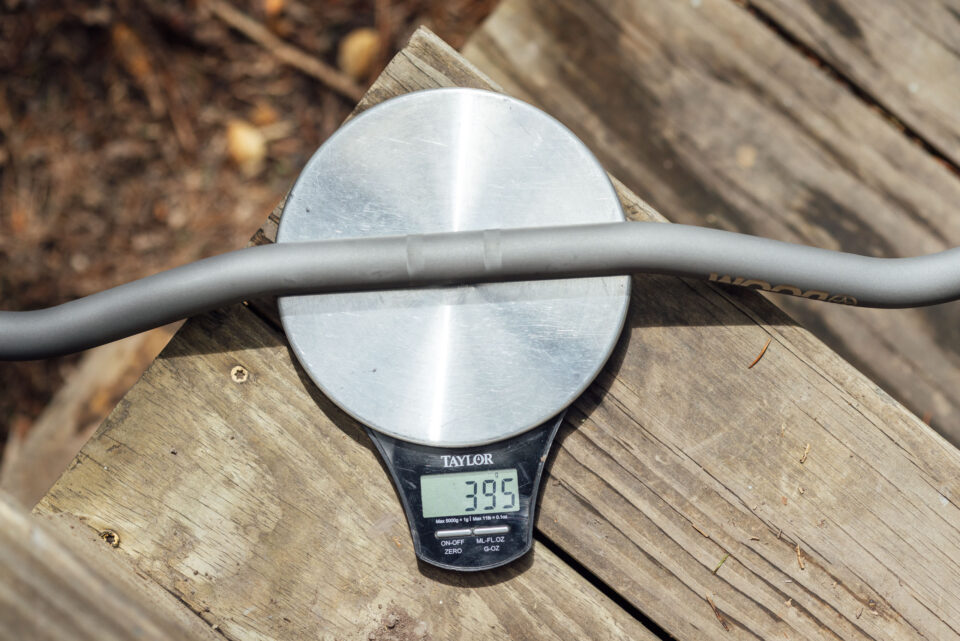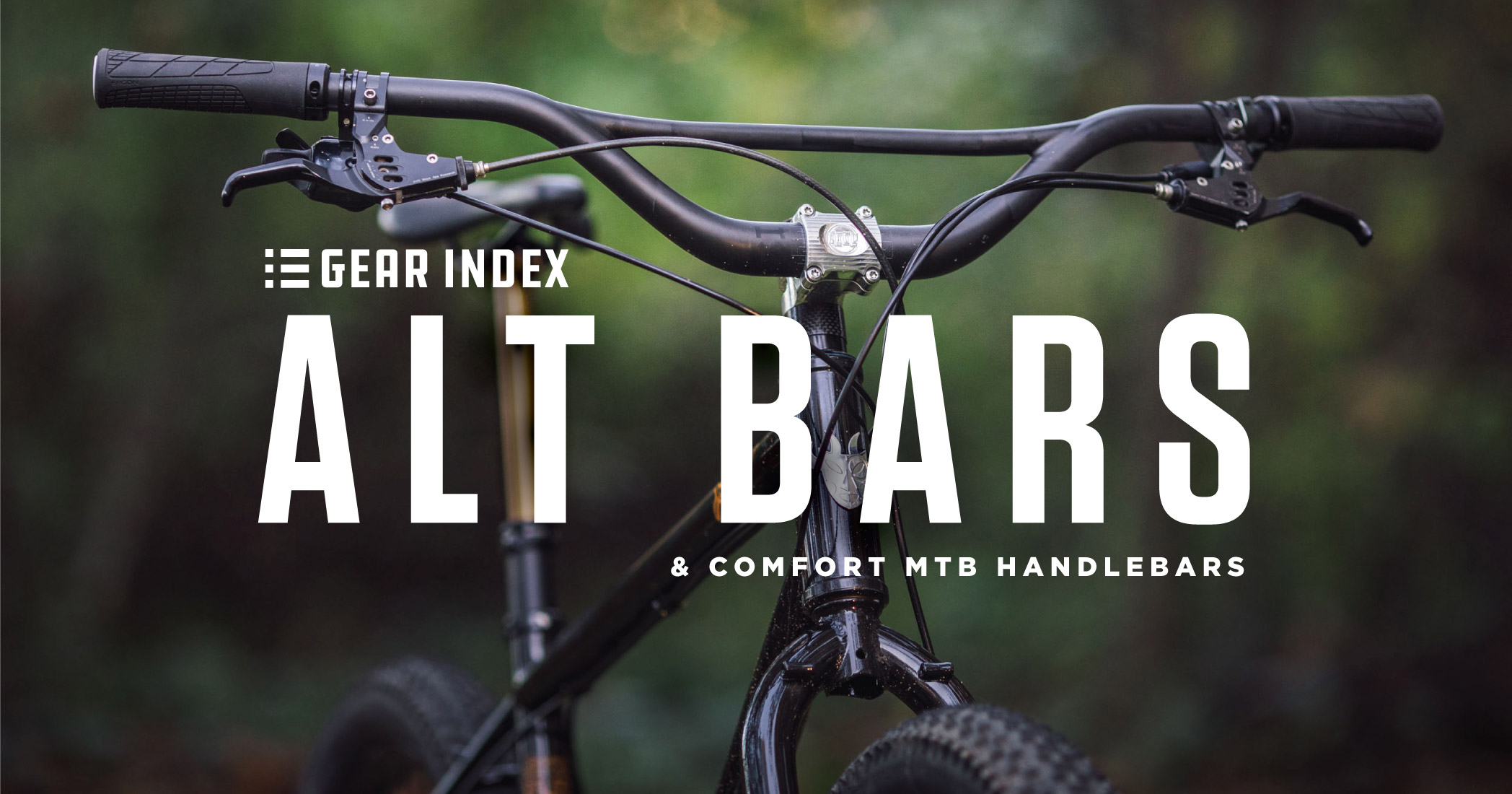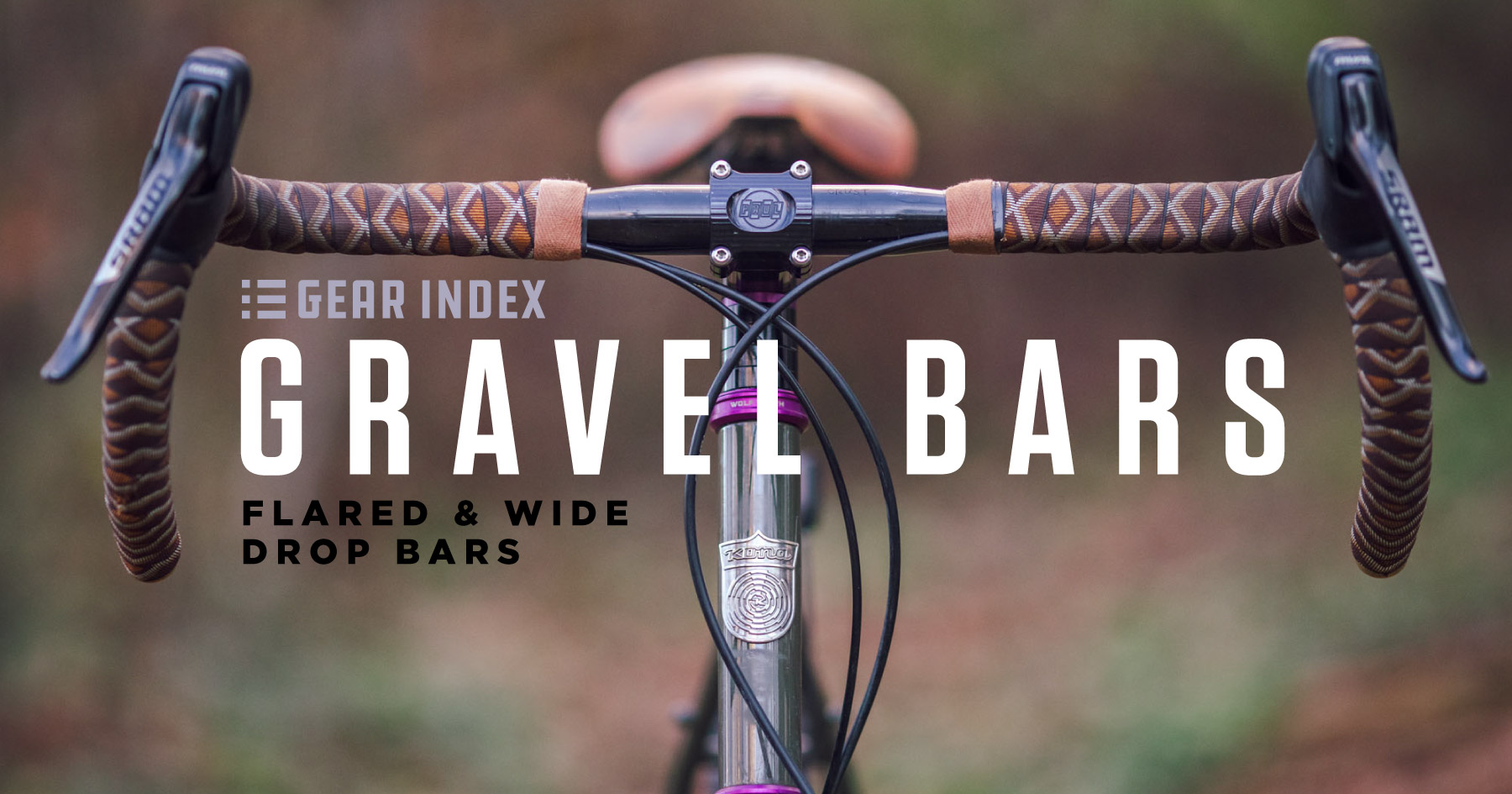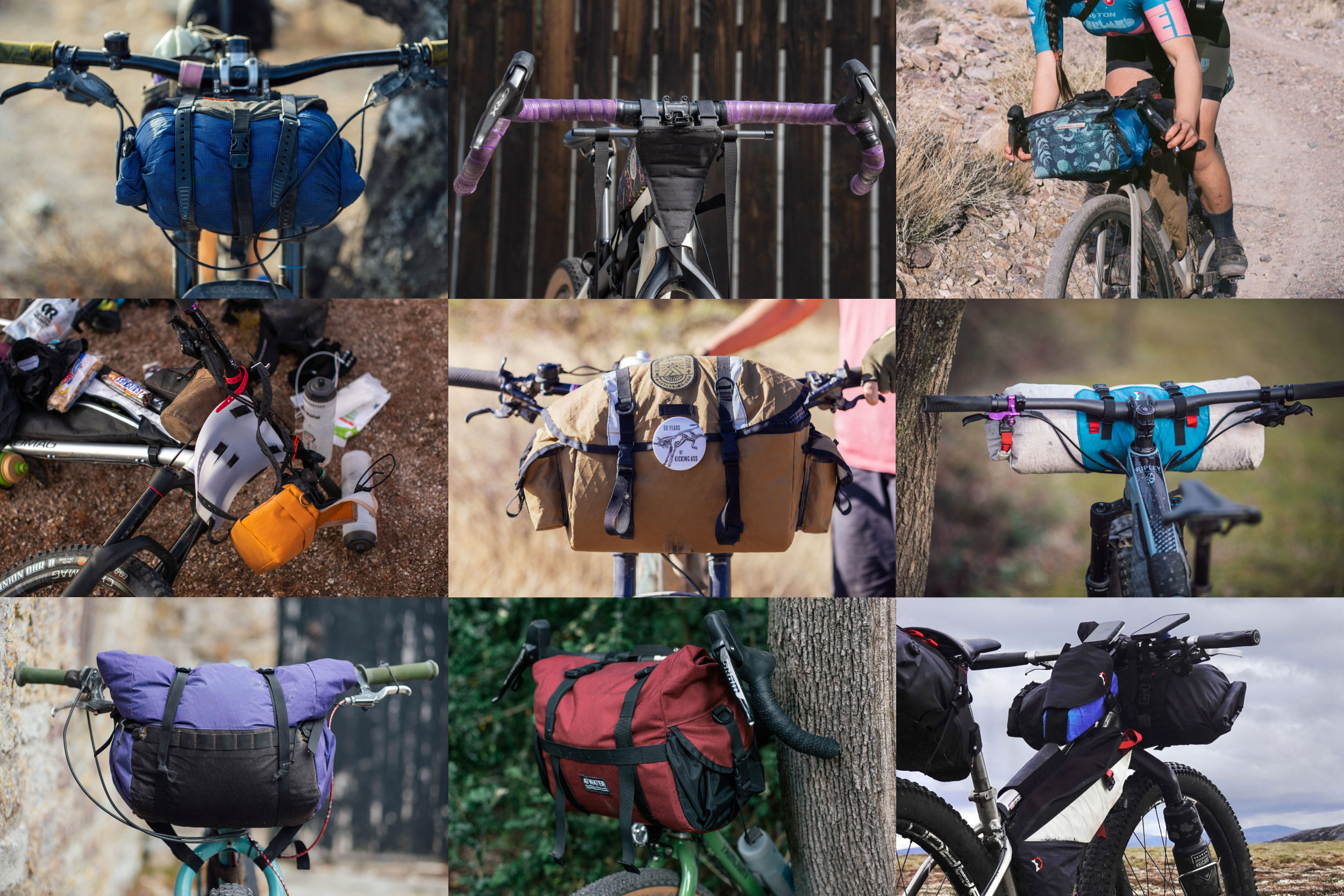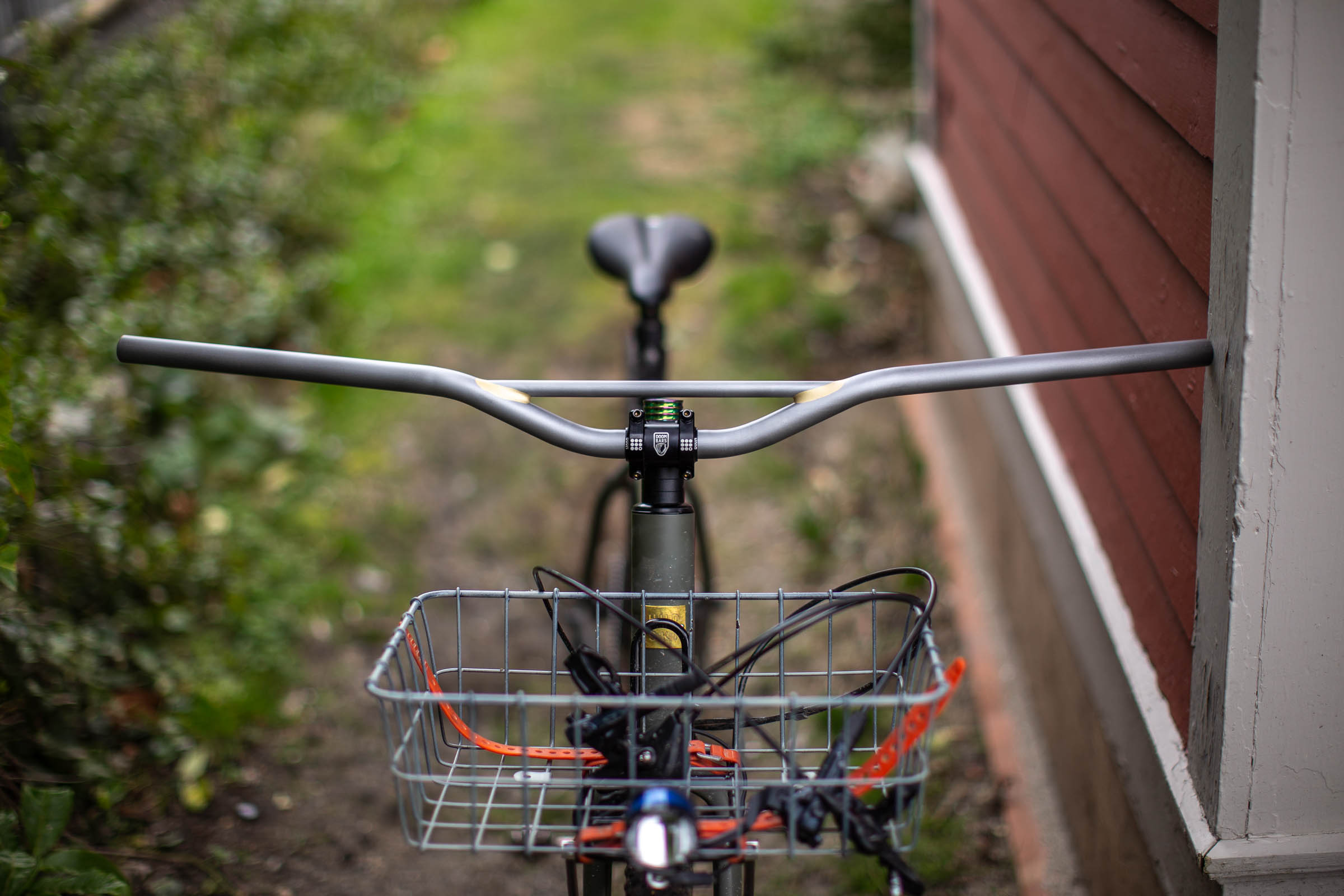Doom Bikepacker’s Delight Review: Steel vs. Titanium Handlebars
Share This
During a multitude of big rides this year, Logan was on a quest to find the perfect combination of handlebar material and backsweep. Along the way, he tested several alt bars, including steel and titanium variations of the Doom Bikepacker’s Delight. Find his in-depth review alongside a comparison of steel vs. titanium handlebars here…
Anyone who’s dedicated a substantial amount of time to singlespeeding on a rigid bike or a short-travel hardtail knows the strain and fatigue it places on your hands. Winching the handlebar up steep ascents and jackhammering down rough descents can exact a toll on your mitts unlike anything else. Having crab-clawed my way out of numerous long singlespeed rides this year, I became increasingly attuned to the nuances of various handlebars and their shapes and materials. Moreover, I experimented with a variety of bars within the 15-20° sweep range in search of the perfect angle to provide an optimal balance between control and comfort. In the thick of all this, I had the opportunity to log extensive miles on two different versions of the Doom Bars Bikepacker’s Delight—both the Chromoly steel and Titanium iterations—enabling me to conduct a side-by-side comparative review of these materials.
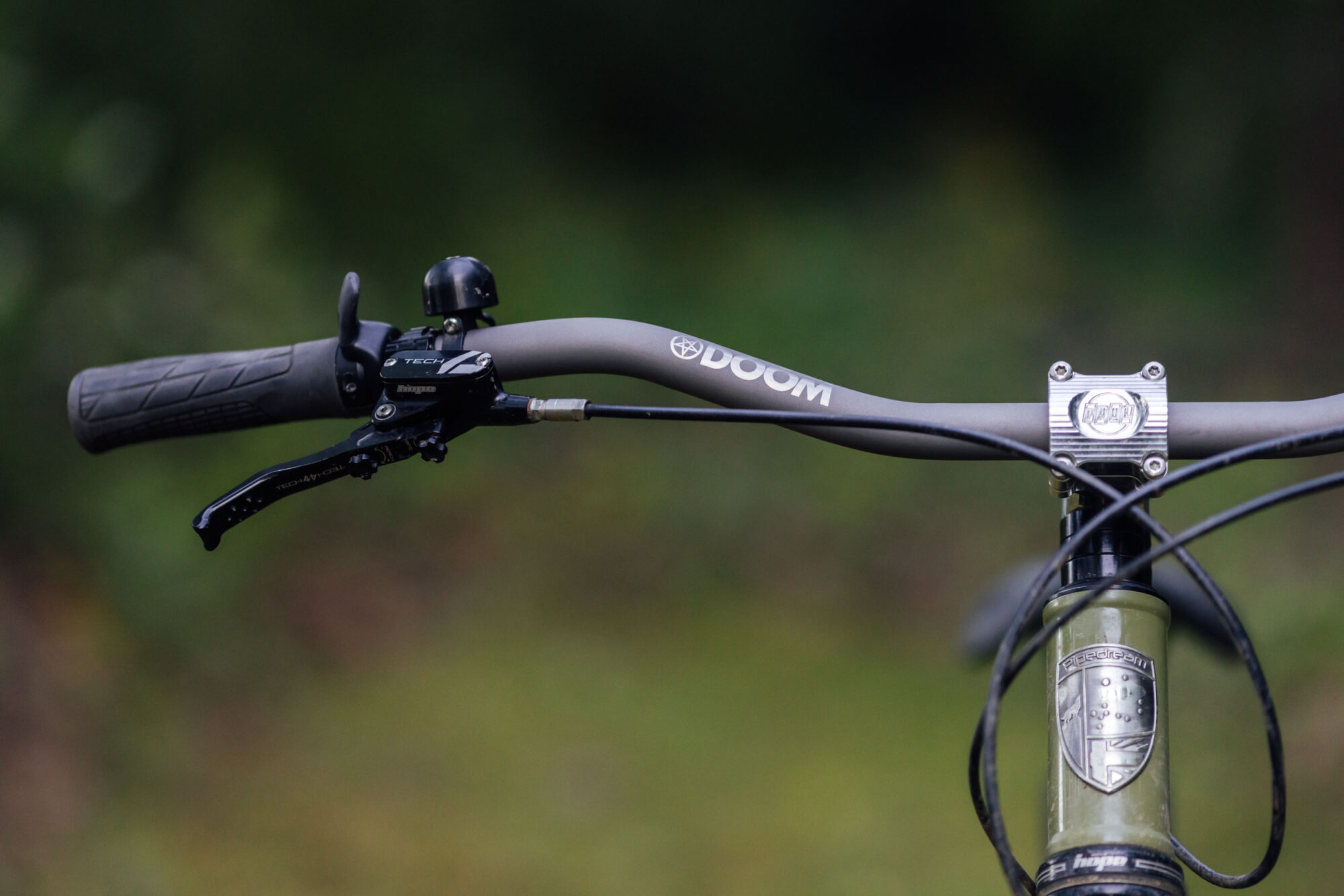
Regular readers may be familiar with Doom Bars. We featured an interview and review of their Lucky Riser bar back in 2021, and I later extolled the virtues of the steel Bikepacker’s Delight in an Editor’s Dozen favorites list. For those unaware, Doom Bars is essentially a one-person operation specializing in mountain bike handlebars. Its owner and craftsman, Keaton Haire, began his journey bending bars in Portland at Terracycle. Since then, Keaton relocated to Albuquerque, New Mexico, and, like many other maker-based startups, he harnessed the expansive solitude brought about by the COVID-19 pandemic to refine his craftsmanship and establish the company. Today, Doom Bars offers a range of models, all meticulously hand-bent and finished by Keaton from 7/8” (22mm) diameter tubing. These bars can be directly mounted into 22.2mm BMX stems or the 22.2mm PAUL Boxcar or clamped with a standard 31.8mm stem using the provided shims.
In My Comfort Zone
As I mentioned in my Editor’s Dozen, I felt compelled to purchase and test a pair of the 4130 chromoly steel Doom Bikepacker’s Delight bars, one of Keaton’s flagship models. If the name alone wasn’t enticing enough, the fact that all Doom Bars are emblazoned with a striking, heavy metal-esque pentagram logo sealed the deal. Additionally, I was intrigued by these bars based on their angles and dimensions. Up to that point, I’d experimented with a half-dozen or so similar alt bars, including the 15° Hunter Smooth Move bars, the 16° Whisky Milhouse, the 17° Stooge Moto Bars, the 20° SOMA Dream Lowdown, and the 30° Tumbleweed Persuader, among others. However, none of them were perfect. The Stooge came close, but a few were too extreme for me personally and played hell on bike fit—the Persuader has too much sweep for my taste, and the Milhouse has too high of a rise. On the other hand, some were simply not wide enough.

The Bikepacker’s Delight seemed to align neatly with my preferences. It’s very wide, for one, and it has a 38mm-ish rise and 19° of backsweep, which falls squarely within my preferred range of 16-21°. Keaton recently dubbed this as the Comfort Shred Zone in his highly official Doom Sweep Zones diagram. With these figures and a wide, flat area, the Bikepacker’s Delight strikes a nice balance and doesn’t wreak havoc on bike fit. Out of the box, the Bikepacker’s Delight measures a sprawling 880mm wide, but it can be custom cut to any specified width when you place your order with a 780mm minimum, preserving a 185mm grip area. I had mine trimmed to 820mm, which I find to be perfect for most applications.
Furthermore, it has a 127mm (5”) wide stem clamp area explicitly designed to accommodate bag straps. This wide, flat area not only provides room for straps and gadgets, but it also helps minimize the effects of the backsweep on bike fit. While 22.2mm can seem a little slim for bikepacking handlebar bag straps, it generally works okay. I’ve used these bars with both the Revelate Pronghorn and the Ron’s Bikes Fab’s Chest. Both fit fine, and I was able to get a secure wrap with the bar straps, despite the bar’s diminutive diameter. On the other hand, it’s difficult (if not impossible) to find 22.2mm clamps for lights and electronics, and none of the new handlebar cradle systems or luggage mounts come in this diameter.

I really like the shape of the Bikepacker’s Delight. It took a few tweaks before I found the angle I preferred, which is rotated slightly forward in relation to the stem. Once I dialed it in, I found that they offer a very comfortable hand position for both long rides and singlespeeding, which often requires extended time out of the saddle. I also find these angles to be perfectly suited for more aggressive trail riding. After using bars like this one and the Stooge Moto Bar (38° rise and 17° backsweep), I realized these angles position me in a more advantageous “attack position” and even offer greater control compared to the typical 8-10° mountain bike handlebar. Anything below 15° simply doesn’t feel right to me anymore.
Steel vs. Titanium
Compared to similarly shaped aluminum bars, such as the 361-gram Stooge Moto, the steel Bikepacker’s Delight is slightly heavier, but it doesn’t go overboard at 552 grams. The straight-gauge 22.2mm steel tubing has a uniquely sturdy feel with a noticeable touch of full-bar flex. I tested them on a couple of different bikes, and they ultimately found a long-term home on my short-travel trail hardtail, where the flex helps dampen significant impacts. However, during extended rides, especially on the singlespeed, I experienced some degree of hand fatigue. While not unusual, it piqued my curiosity about whether the Titanium version of these bars would make a difference.
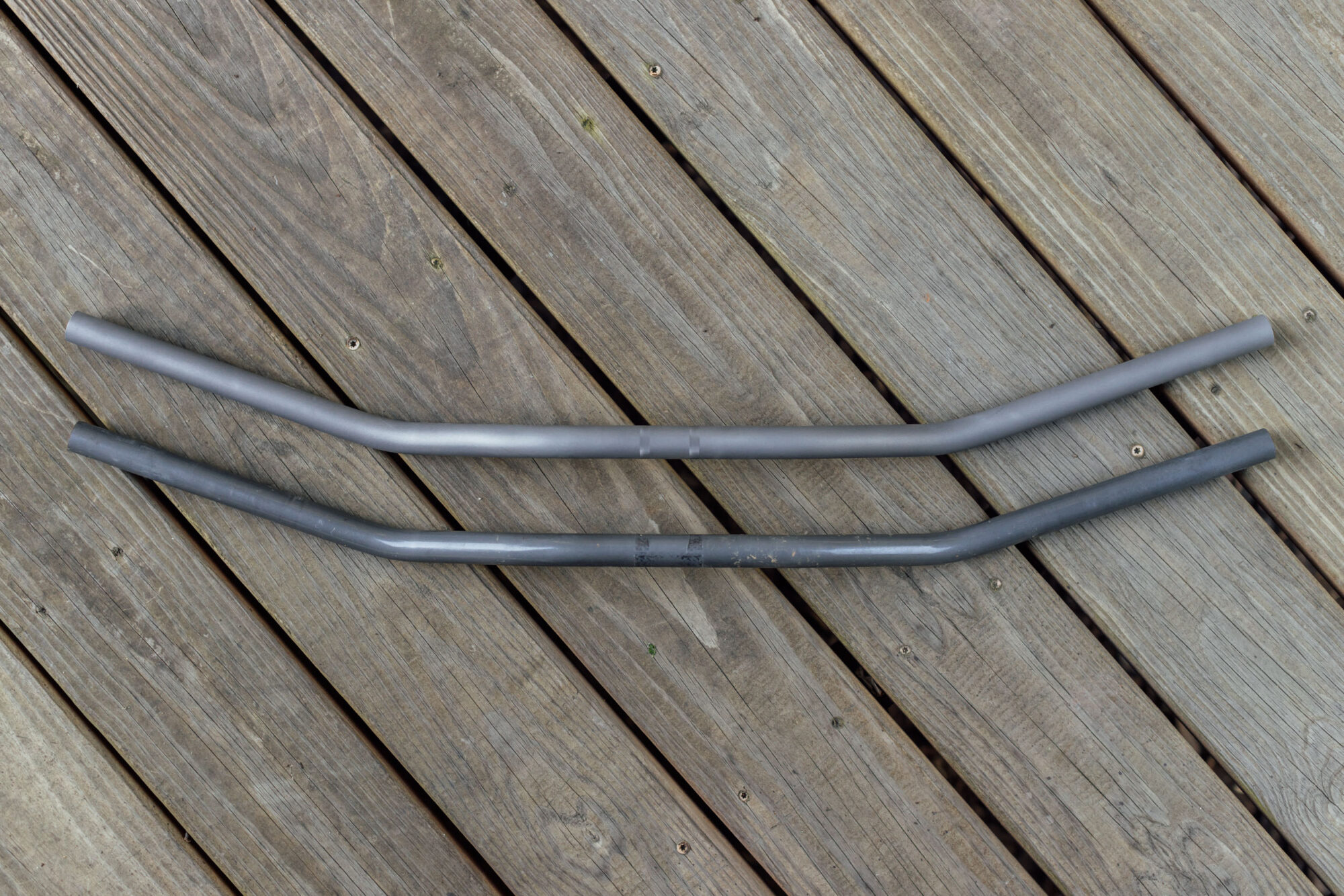
The titanium Bikepacker’s Delight shares the same angles and shape as the steel version but, to state the obvious, it’s notably lighter, and in my experience, far gentler on the hands. When I made the switch from Chromoly to titanium during a period of regular singlespeed race training, it felt like night and day. Strangely, the difference doesn’t seem that dramatic when you ride them back to back; the Ti bars exhibit slightly more flexibility and bump and vibration damping, although not to an excessive degree. However, the impact on long rides was unmistakable. During my first big ride with them, which was very similar to a prior lengthy ride on the same bike with the Chromoly bars that had left my hands pretty beat up, my hands felt relatively fine after a half day of hard pedaling.
As Keaton pointed out, the primary reason titanium staves off hand fatigue is its superior elasticity compared to steel, enabling it to flex further without any permanent deformation or breakage. That means that you can design a titanium handlebar that flexes more than a steel bar while still being just as durable. Still, I don’t think the Ti Bikepacker’s Delight are excessively flexy by any means, but the four-bend design (without a crossbar) unquestionably provides some shock absorption and a comfy ride.
Which is Stronger?
In order to make a titanium handlebar capable of withstanding similar forces to a chromoly steel handlebar, the amount of material has to increase, resulting in the need for tubing with thicker walls. The 4130 chromoly tubing utilized in the steel Bikepacker’s Delight has a wall thickness of 1.2mm (0.049”) and weighs 552 grams (19.5 oz) when cut to 820mm. The Titanium bars are made from tubing with a 1.6mm (0.061″) wall thickness, weighing 395 grams (13.9 oz) at the same 820mm length. All told, Titanium tubing is approximately 160 grams lighter for every three feet of material.
When I asked about the strength of these bars, Keaton responded, “We aim to design all of our bars so that they will hold up for most riders in most riding conditions. For liability, we don’t recommend our standard bars for riders over 200 pounds or people who are riding aggressively off-road (downhill or freeride).” For larger riders or folks who want to ride aggressively, he uses a thicker tubing to make beefier custom bars. He also mentioned that the titanium bars are theoretically stronger and more resistant to failure than the chromoly bars, but they should be fairly comparable to one another.

The steel Doom Bikepacker’s Delight is available in a clear-coated raw finish (as photographed here), Endless Abyss Black Powdercoat, or nickel-plated. The titanium option is offered in a raw finish or media blasted with a polished logo (as shown).
- Model Tested: Doom Bars Bikepacker’s Delight (Steel and Titanium versions)
- Actual Weight (steel/820mm): 552 grams (19.5 oz)
- Actual Weight (Ti/820mm): 395 grams (13.9 oz)
- Place of Manufacture: New Mexico, USA
- Price: $185-295
- Manufacturer’s Details: Doom Bars
Pros
- Excellent shape and angles that are well-balanced for long-ride comfort and technical trail-riding prowess
- The four-bend design offers whole-bar flex and shock absorption, more so in the titanium version
- Titanium Bikepacker’s Delight does an outstanding job at preventing hand fatigue
- Great looking bars that are made in New Mexico
- Available in several finishes
Cons
- Fairly expensive, particularly the titanium version
- Can be pretty tricky to dial in the fit; it took me a few tweaks
- Hard to find stems and accessory clamps for 22.2mm bars
Wrap Up
The Doom Bikepacker’s Delight is a unique bar that ticked a lot of boxes for me. It has all the right angles and can be custom cut anywhere between 780 and 880mm. Better yet, both versions offer a sturdy feel with a tangible bit of full-bar flex that provides a little damping for bigger bumps and impacts. This characteristic is counter to what the mainstream mountain bike industry says we need—increased stiffness via stout bars with a 35mm clamp area—but it makes sense for someone who appreciates the essence of riding a rigid bike, or someone who thinks a suspension fork with 120mm of travel is just fine. Plus, the added compliance and the nature of the material in the titanium version does an excellent job at minimizing hand fatigue. They’re a hefty investment, but if these qualities and angles fall into your comfort zone, they might be worth it for you.
Further Reading
Make sure to dig into these related articles for more info...
Please keep the conversation civil, constructive, and inclusive, or your comment will be removed.






